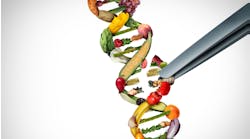A few days after being sued for it by the Center for Food Safety, USDA released results of a yearlong study to identify technological challenges with electronic disclosure of genetically engineered (GMO) ingredients in food.
While the study refuted critics' claims that not enough shoppers own smartphones, it did admit not all people have the applications or are savvy enough to read a QR code and may not have access to or choose not to use cellular data. It suggests stores install free WiFi networks and possibly other technologies to assist with the program.
To deal with mounting public pressure – and a handful of state laws -- for disclosure of GMO ingredients, Congress in July 2016 passed the bipartisan National Bioengineered Food Disclosure Standard. It allowed three options for the mandatory disclosure of GMOs: add "contains genetically modified organisms" to food labels, use a GMO label to be created by USDA or use a QR code, which the food industry's lobbying arm has dubbed SmartLabel.
The QR code option was a compromise with members of the food industry. Processors would be required to indicate the presence of GMOs immediately after the code is scanned, although they could add other facts and marketing about the product once the website was accessed.
The study apparently has been complete for a while, but the results were not publicized. The Center for Food Safety filed a federal lawsuit on Aug. 25 demanding its release, as required by Congress, and USDA publicized the report, which was prepared with consulting firm Deloitte, on Sept. 6.
This study considered five factors:
- The availability of wireless internet or cellular networks;
- The availability of landline telephones in stores (an 800 phone number was a companion option for GMO labeling);
- Challenges facing small and rural retailers;
- The efforts that retailers and other entities have taken to address potential technology and infrastructure challenges;
- The costs and benefits of installing in retail stores electronic or digital link scanners, or other evolving technology that provide bioengineering disclosure information
Some of the studys' findings:
- The majority of Americans own a smartphone (77%) and ownership rates are trending upward;
- Most Americans live in areas with sufficient broadband access (93.6%) to scan a digital link to access bioengineering food disclosure information;
- All national chain stores and most regional chain stores (97%) provide WiFi in store;
- Only 37 percent of small retailers already provide WiFi to consumers in store;
- Consumers may recognize digital links but lack familiarity with scanning;
- Many consumers (85%) experienced technical challenges using certain mobile software applications (“apps”) for scanning digital links;
- Scanning digital links requires access to the internet; therefore, some retailers may need to install WiFi networks for consumers without access to cellular data or local WiFi networks
This study involved more than 150 observations or in-depth discussions and nearly 1,000 crowdsourced participants across the country. All participants in this study were interested in accessing information on bioengineered food.
The authors noted: "Overall, 62 percent of study respondents did not voice challenges that might impact their access to information in a digital link. However, in direct observations of consumers who are interested in accessing the disclosure, researchers observed key technological challenges that prevented nearly all participants from obtaining the information through electronic or digital disclosure methods."
Nevertheless, the study believes "these challenges can be overcome through appropriate implementation of the law." A learning curve may overcome these challenges:
- Digital links are not inherently associated with additional food information, and consumers often assume they are for marketing and industry use.
- Of 40 in-depth conversations with consumers, all 40 either did not recognize the on-package digital link or did not associate it with food information.
- Retailers were also unfamiliar with digital links and thus were unable to assist consumers.
- Of 42 retailers visited across the country, none provided scanners capable of accessing information in a digital link.
- While there are hundreds of scanning apps available in the market, many are not intuitive to use, causing consumer confusion and difficulty opening link results.
In direct observations, 85 percent of consumers struggled with complicated mobile software applications, regardless of their comfort using technology. This is partly due to wide variability in apps available. In addition, most apps contain advertisements that confuse consumers and run counter to how the law requires disclosure.
See the complete report here.

